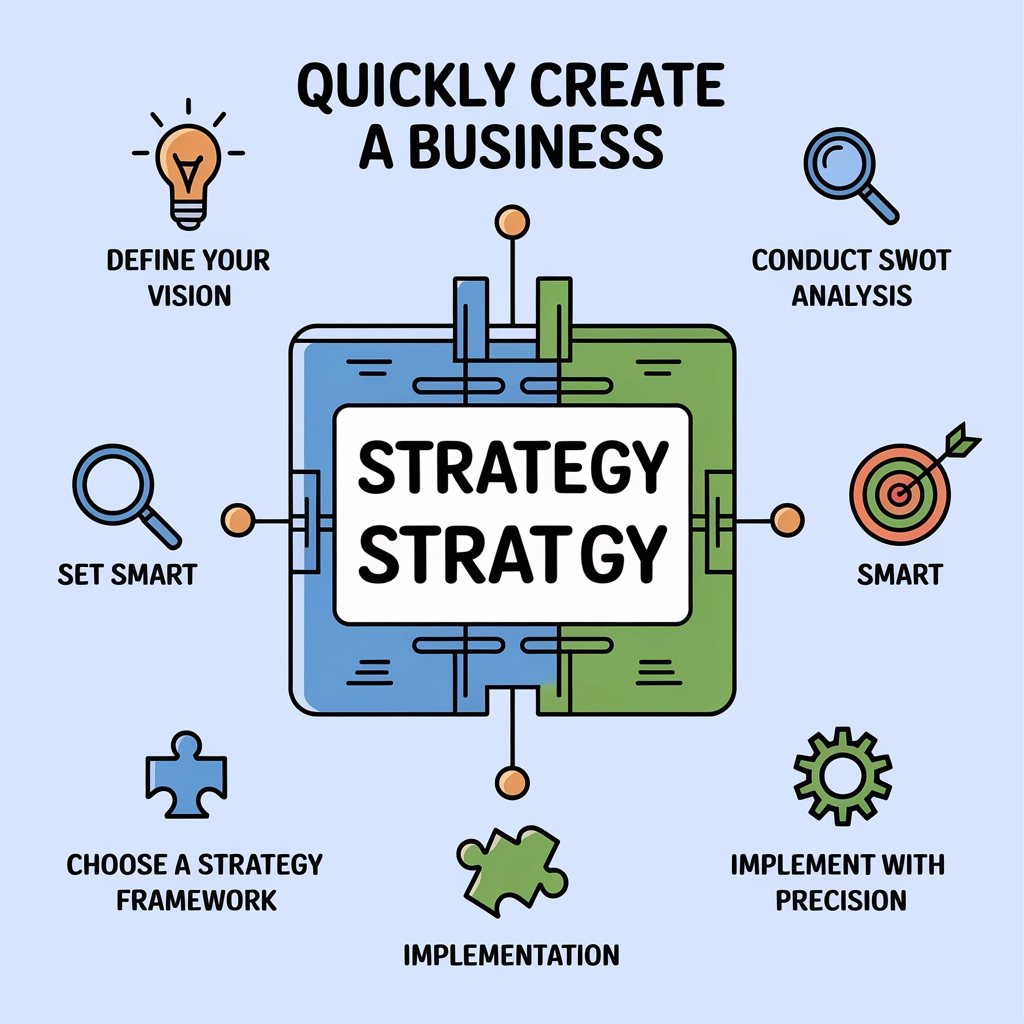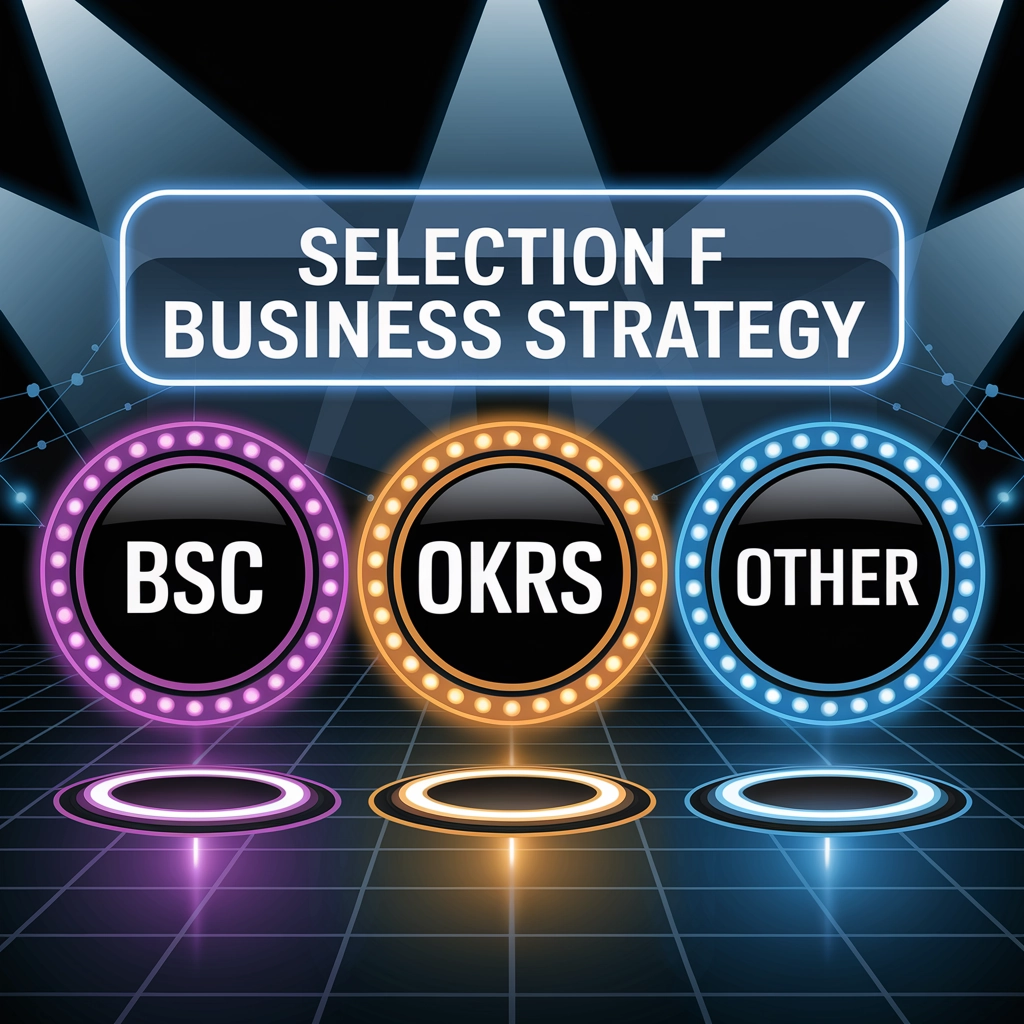How to Create Impactful Business Strategies in 5 Minutes
- caracal0161
- Jul 28
- 6 min read
In today's high-velocity business environment, the ability to craft effective strategies quickly is more than a competitive advantage—it's a necessity. The days of month-long strategy retreats and hundred-page business plans are fading as market conditions shift with unprecedented speed. Whether you're a venture capitalist evaluating investment opportunities, an entrepreneur pivoting to meet emerging demands, or an executive steering through disruption, mastering rapid strategy development can transform your business trajectory.
This guide will walk you through a proven 5-minute framework for creating business strategies that aren't just quick but genuinely impactful. By streamlining the strategic planning process into five focused steps, you'll learn to transform complexity into clarity and convert ideas into actionable plans—all within the time it takes to enjoy your morning coffee.


1. Define Your Vision (60 Seconds)
The foundation of any impactful strategy begins with a clearly articulated vision. Without it, even the most detailed plans lack direction. Your vision isn't just a statement—it's the North Star guiding every subsequent decision.

Creating a Compelling Vision Statement
A powerful vision statement:
- Captures your aspiration: What specific success looks like for your organization
- Sets clear parameters: Defines the scope, scale, and timeline
- Motivates action: Inspires teams to rally around a common purpose
- Remains actionable: Can be translated into concrete objectives
"The difference between a good strategy and a great one often lies in the clarity of vision. When everyone sees the same destination, the journey becomes exponentially more efficient."
Quick Exercise: Write one sentence that completes "By [timeframe], we will [achievement] by [method]."
For example: "By Q4 2023, we will achieve $1M in new revenue by expanding into two emerging markets."
This single statement provides direction (expansion), quantifiable success ($1M), and a timeframe (Q4)—all essential components for the next steps in your rapid strategy development.
2. Conduct a SWOT Analysis (90 Seconds)
With your vision established, it's time for an honest assessment of your current position through a SWOT analysis: Strengths, Weaknesses, Opportunities, and Threats.

90-Second SWOT Framework
Use this rapid-fire approach to identify key elements in each category:

Strengths (20 seconds)
- What unique resources do you have?
- Where do you consistently outperform competitors?
- What do customers praise most about your offerings?
Weaknesses (20 seconds)
- What resource gaps limit your progress?
- Which areas consistently underperform?
- What do customers frequently criticize?
Opportunities (25 seconds)
- What market trends could you capitalize on?
- Are there underserved customer segments?
- Which competitor weaknesses could become your advantages?
Threats (25 seconds)
- What competitive challenges are emerging?
- Which market shifts could undermine your position?
- What resource constraints pose the greatest risk?
Pro Tip: Keep this analysis brutally honest. A SWOT that merely confirms existing biases provides no strategic value. The most impactful insights often come from confronting uncomfortable truths about your organization's weaknesses or external threats.
3. Set SMART Goals (60 Seconds)
With your vision clarified and position assessed, it's time to set concrete goals. SMART goal-setting ensures your objectives are Specific, Measurable, Assignable, Realistic, and Time-bound—transforming lofty aspirations into actionable targets.

The One-Minute SMART Framework
For maximum efficiency, focus on creating 2-3 primary goals that directly support your vision:

SMART Component | Key Question | Example |
Specific | What exactly will be accomplished? | Increase market share in the Northeast region |
Measurable | How will success be quantified? | Grow from 15% to 25% market share |
Assignable | Who is responsible for this goal? | Regional sales team led by VP of Sales |
Realistic | Is this achievable given resources and constraints? | Yes, with reallocation of marketing budget |
Time-bound | By when must this be completed? | End of Q3 2023 |
When properly constructed, each SMART goal creates absolute clarity around:
- What success looks like
- Who is accountable
- When it must be achieved
- How progress will be measured
Quick Exercise: Draft one primary SMART goal that directly supports your vision statement, ensuring it includes all five components.
4. Choose a Strategy Framework (60 Seconds)
The framework you select organizes your strategic approach and ensures all initiatives align with your overarching goals. Think of it as choosing the right tool for the job.

Selecting the Right Framework in 60 Seconds
Consider these three popular frameworks and their ideal applications:

Balanced Scorecard (BSC)
Best for: Organizations seeking comprehensive alignment across multiple dimensions
- Evaluates performance across four perspectives: financial, customer, internal processes, and learning/growth
- Creates a balanced view that prevents over-focusing on financial metrics alone
- Ideal for established organizations with complex operations
Objectives and Key Results (OKRs)
Best for: Fast-moving companies needing agility and clear progress metrics
- Sets ambitious objectives with specific, measurable key results
- Emphasizes transparency and regular check-ins
- Perfect for startups and companies in rapidly evolving markets

Porter's Five Forces
Best for: Companies entering new markets or facing intense competition
- Analyzes competitive dynamics through five dimensions
- Helps identify strategic positioning opportunities
- Useful when competitive threats dominate strategic concerns
Decision Framework: Answer these questions to choose your framework:
- How complex is your organization? (More complex = BSC)
- How quickly does your market change? (Faster = OKRs)
- How significant are competitive pressures? (High competition = Porter's)
Select the framework that best aligns with your vision, SWOT insights, and SMART goals. Remember, the framework is a tool—choose the one that best serves your specific needs.
5. Implement with Precision (90 Seconds)
The final minute and a half focuses on execution—transforming your strategy from concept to action. Even the most brilliant strategy fails without proper implementation.

The 90-Second Implementation Plan
Communication Plan (30 seconds)
Determine how to share your strategy throughout the organization:
- Leadership alignment: Who needs to champion this strategy?
- Team communication: How will you convey expectations to frontline teams?
- Key messaging: What are the 2-3 core messages everyone must understand?
Accountability Framework (30 seconds)
Establish how progress will be monitored and managed:
- Key metrics: What 3-5 numbers will track progress?
- Reporting cadence: How often will you review performance?
- Ownership clarity: Who is responsible for each major component?

Adaptability Protocols (30 seconds)
Create mechanisms to adjust course as needed:
- Trigger points: What changes would necessitate strategic adjustments?
- Review process: How will you evaluate the need for changes?
- Decision authority: Who can authorize strategic pivots?
"Implementation isn't the last step in strategic planning—it's the true test of its value. The best strategies evolve through execution."
Action Item: Schedule your first strategy review meeting now, before implementation begins. This creates an immediate accountability mechanism.
Putting It All Together: The 5-Minute Strategy in Action
Let's see how this process works with a concrete example:
Case Study: Tech Startup Entering Healthcare Market

Vision (60 seconds): "By Q2 2024, establish our AI diagnostics platform as the preferred solution for mid-sized healthcare providers by achieving 15% market penetration and $3M in recurring revenue."
SWOT (90 seconds):
- Strengths: Proprietary AI algorithm; experienced data science team; low operational costs
- Weaknesses: Limited healthcare industry connections; unproven in clinical settings
- Opportunities: Growing telemedicine market; increasing acceptance of AI in healthcare; regulatory barriers dropping
- Threats: Established competitors with deep provider relationships; potential new privacy regulations
SMART Goals (60 seconds):
- Complete clinical validation studies with three tier-1 medical centers by end of Q4 2023
- Secure partnerships with five healthcare provider networks totaling 500+ physicians by Q1 2024
- Achieve $1M in committed recurring revenue by end of Q1 2024
Framework Selection (60 seconds): OKRs selected due to rapidly evolving market conditions and need for agility in the healthcare technology space.
Implementation (90 seconds):
- Communication: Weekly OKR updates with all teams; monthly all-hands strategy reviews
- Accountability: Sales dashboard tracking provider conversations, pilots, and conversions; bi-weekly review
- Adaptability: Quarterly strategy reassessment; pivot triggers include <50% achievement of quarterly OKRs or significant regulatory changes

This entire strategic plan was developed in just 5 minutes but provides clear direction, accountability, and flexibility—essential elements for navigating a complex market entry.
Accelerating Strategic Development in Your Organization
While the 5-minute framework provides individual leaders with a powerful tool, organizations can further enhance their strategic agility through specialized resources. Modern data analytics platforms can significantly compress the time required for market analysis and competitive intelligence, providing crucial inputs for each step of the strategic process.

Tools that leverage artificial intelligence to analyze market trends, competitor movements, and internal performance data can deliver insights in hours rather than weeks. For example, companies like CEOPro AI specialize in rapid business intelligence, generating comprehensive strategic insights within 48 hours—dramatically accelerating the strategy development cycle for time-sensitive decisions.
Conclusion: From Minutes to Momentum
The ability to create impactful business strategies quickly isn't just about saving time—it's about maintaining relevance in a business environment where opportunities emerge and dissolve with unprecedented speed. By mastering this 5-minute framework, you transform strategic planning from a sporadic, time-intensive exercise into a dynamic capability that serves your organization daily.

Remember these key principles:
- Strategy development can be both rapid and rigorous
- Vision provides direction; SWOT provides position
- SMART goals create accountability; frameworks create structure
- Implementation transforms concepts into reality
The leaders who thrive in today's business landscape aren't those who plan most extensively, but those who can rapidly translate insight into action. By embracing this approach, you position yourself to capture opportunities others miss and navigate challenges others cannot surmount.
The true competitive advantage isn't just having a strategy—it's having the right strategy at precisely the right moment. And that begins with mastering the art of the 5-minute business strategy.

Comentários